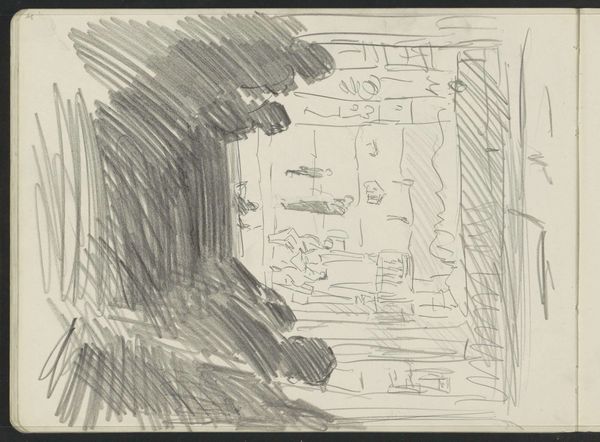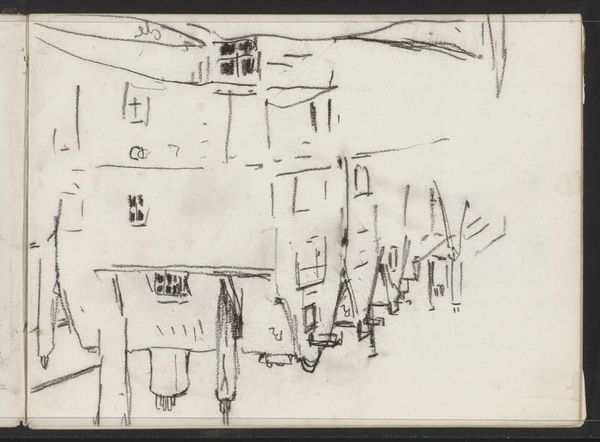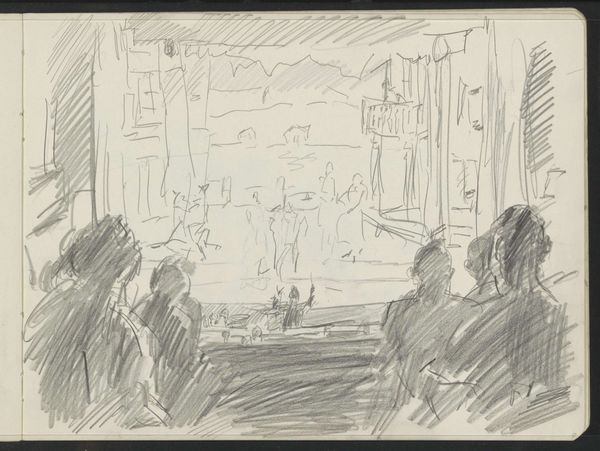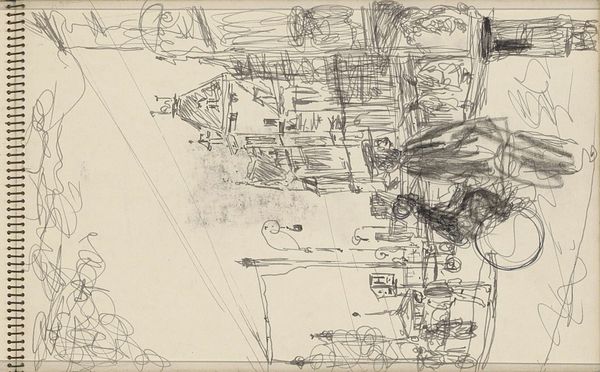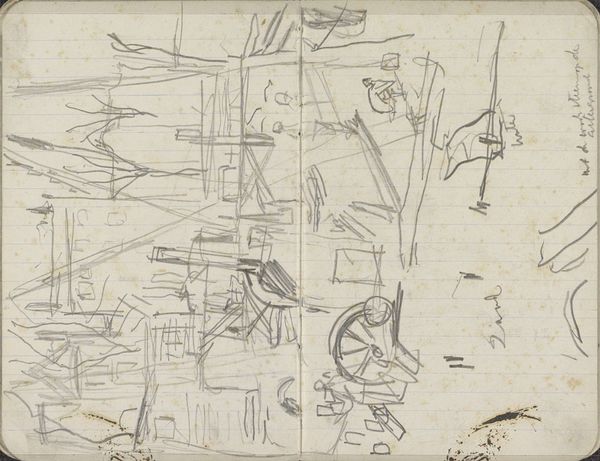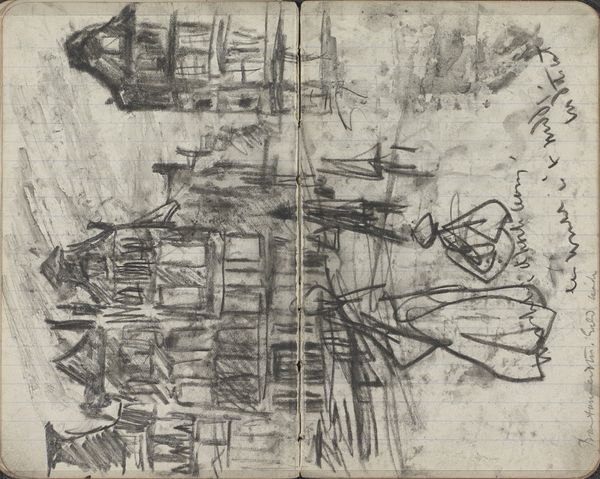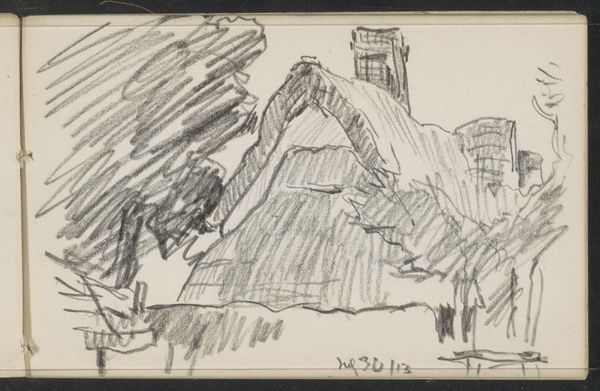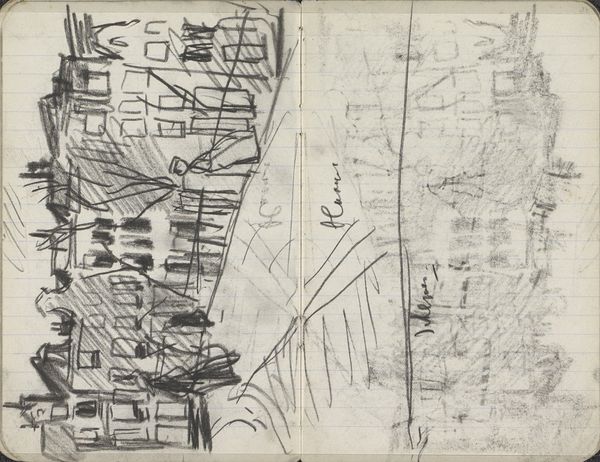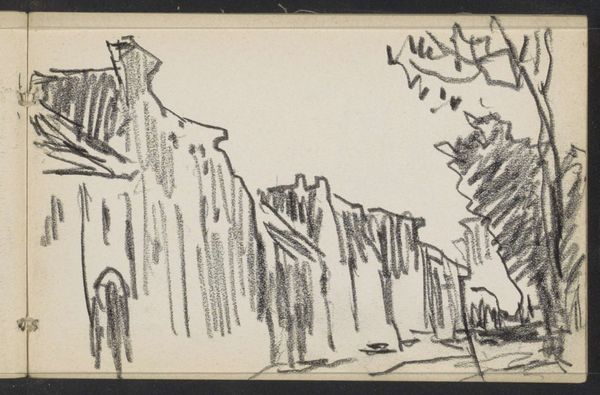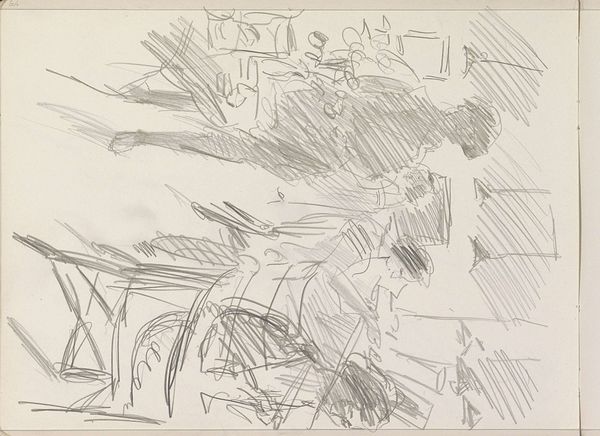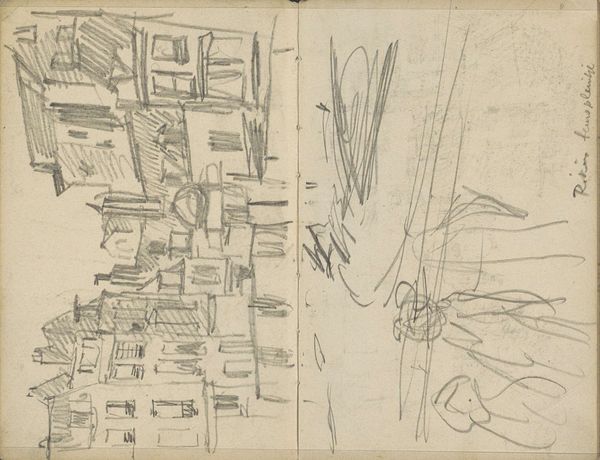
Copyright: Public Domain: Artvee
Curator: This is Karl Wiener's "Gespenster-Soldat," created in 1943 using pen and ink. What's your immediate reaction? Editor: Stark. The electric blue against that field of solid red creates an unsettling tension, and the destroyed city evokes a sense of profound loss and trauma. The architectural skeleton almost seems to bleed against the flat ground. Curator: The limited materials themselves speak to the wartime constraints, don't they? Ink and pen become a readily available means of documenting, perhaps protesting, the devastation. Notice how the drawing, with its deliberate expressive quality, avoids any illusionistic depth, emphasizing the two-dimensionality and the rawness of its production. It's clearly a political statement about a ruined world. Editor: Absolutely. The graphic quality lends it an almost nightmarish aura. Let's look at how Wiener uses line. The chaotic lines of the buildings contrast with the more formalized structure of the figure, creating a discordance that further intensifies the sense of alienation and the unreality of conflict. The artist builds the picture as something shattered, and the contrast almost erases the person within. Curator: Considering it was made in 1943, imagine the access to art supplies during wartime. It's essentially reportage, but made immediate through inexpensive means. Its existence becomes a statement of resilience itself; even a common sketchbook becomes a weapon. I would posit that the red may signal that there may be no return. Editor: And the figure almost seems spectral, outlined rather than fully rendered, furthering the symbolic feeling of loss and making explicit the connection between figure and city; maybe the soul is wandering. I am very affected by how Wiener captures so many conflicting narratives. Curator: His decision to portray a scene of destruction through inexpensive materials creates this paradox – the preciousness of recording historical experiences coupled with making it available and democratic to all. This makes this an emotionally powerful work. Editor: Yes, I’m seeing now how the very materials Wiener employs amplify the overall impact of the image; this pen and ink drawing achieves the status of profound historical document and is made more visceral for its immediacy and simple materiality. Thank you for that observation!
Comments
No comments
Be the first to comment and join the conversation on the ultimate creative platform.

